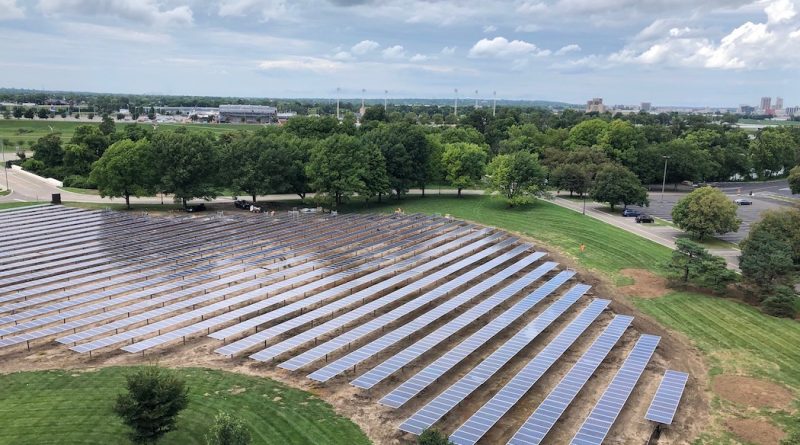Alumni, Students Work On UD’s New Solar Panels
Grace James
Contributing Writer
In a matter of weeks, the University of Dayton will have new solar panels up-and-running at Curran Place and Fitz Hall. This project has involved faculty, staff and students in collaboration with the Melink Corporation in Cincinnati.
Melink is leasing the panels to UD for 25 years, with the option to buy the panels at market value after 8 years.

Steve Kendig, Executive Director of Energy Utilization & Environmental Sustainability, felt the partnership has been special for the university, as it has brought many UD alumni back to campus.
“Melink hires a ton of our students,” Kendig said.
UD alumni from Melink have returned to campus to work on the project, and the company allowed current students to participate in meetings about the panels.
Elise Erhart, a senior environmental biology major, was one of these students. As a student leader for the Hanley Sustainability Institute, Erhart is working with a team that is developing a prairie habitat that will help power the new solar panels. By planting certain species of plants, the habitat will cool the ground, which prevents runoff and helps the solar panels produce more energy.

The prairie team also is working with U.S. Fish and Wildlife, as well as Five Rivers MetroParks. The team is incorporating native plants into the prairie that are native pollinators, attracting many other species of bees and insects.
Art students have worked with the project too. Caitlin Marshall and Payton Oakes, both senior graphic design majors, got involved through Professor John Clarke’s design science synthesis course. They are working to design content that will be part of the prairie.
“We are still working on developing the design, concepts and content we want shared on the site of the solar prairie,” Oakes said. “The solar prairie not only helps our energy usage, but it also helps bringing back the prairie plants that once used to take up this whole campus.”
“This content will include informational panels, some poetic elements of design that reflect the University’s mission as a Marianist community, as well as a system of way finding around the path,” Marshall added.

For those involved, whether it be from a scientific or artistic perspective, the project is about bringing sustainability into UD’s community and encouraging everyone on campus to participate.
“It’s really working toward promoting environmentally-conscious people,” Erheart said.
As Marshall put it, “This movement makes me even more proud than I already was that I chose to be a Flyer four years ago.”

